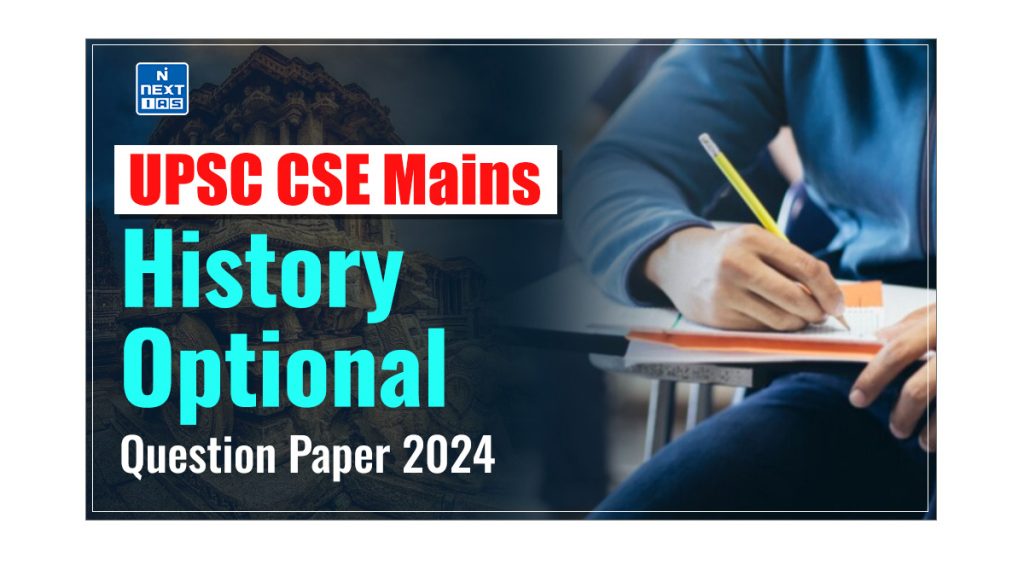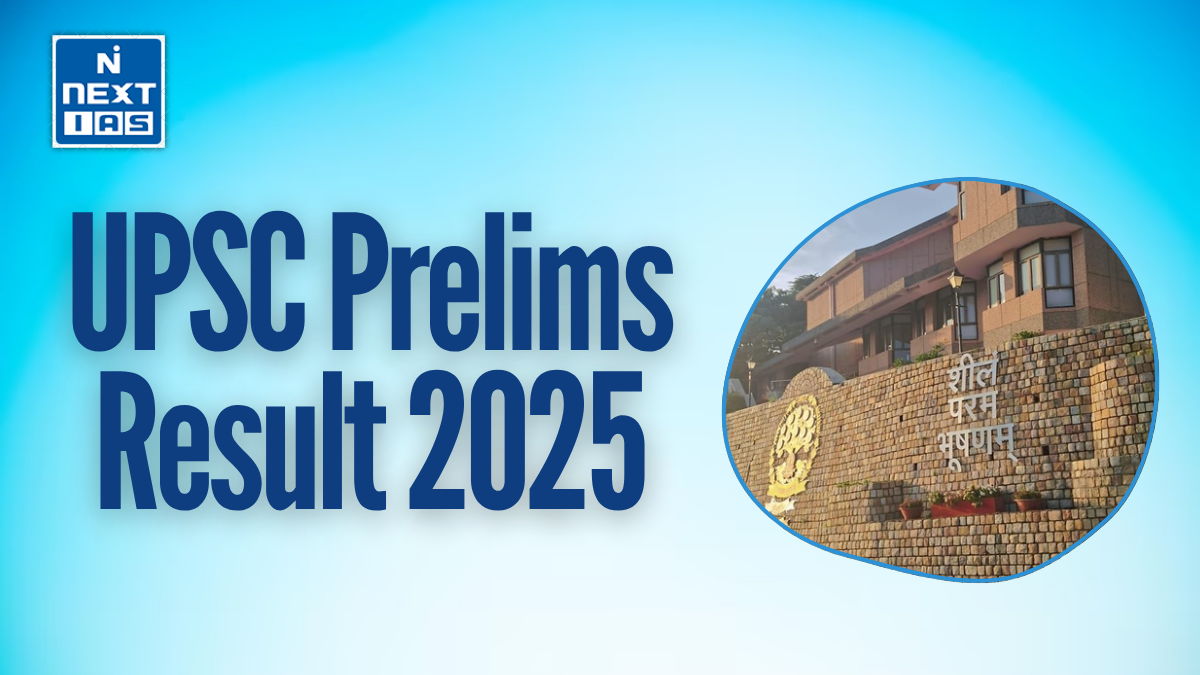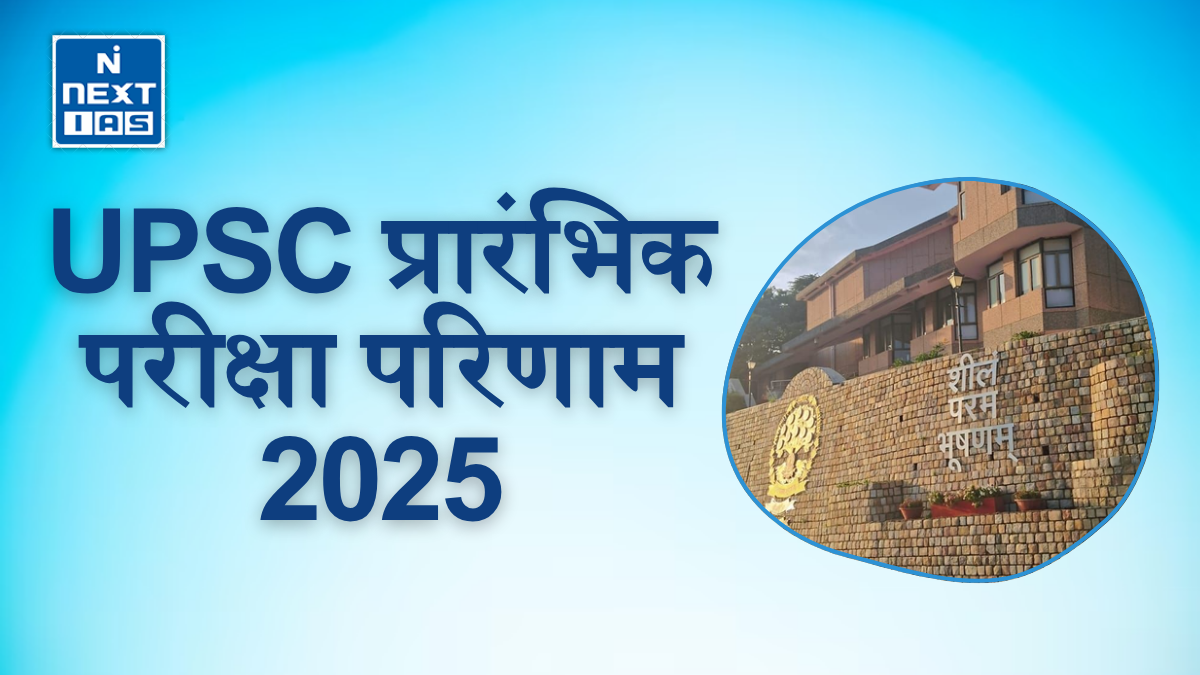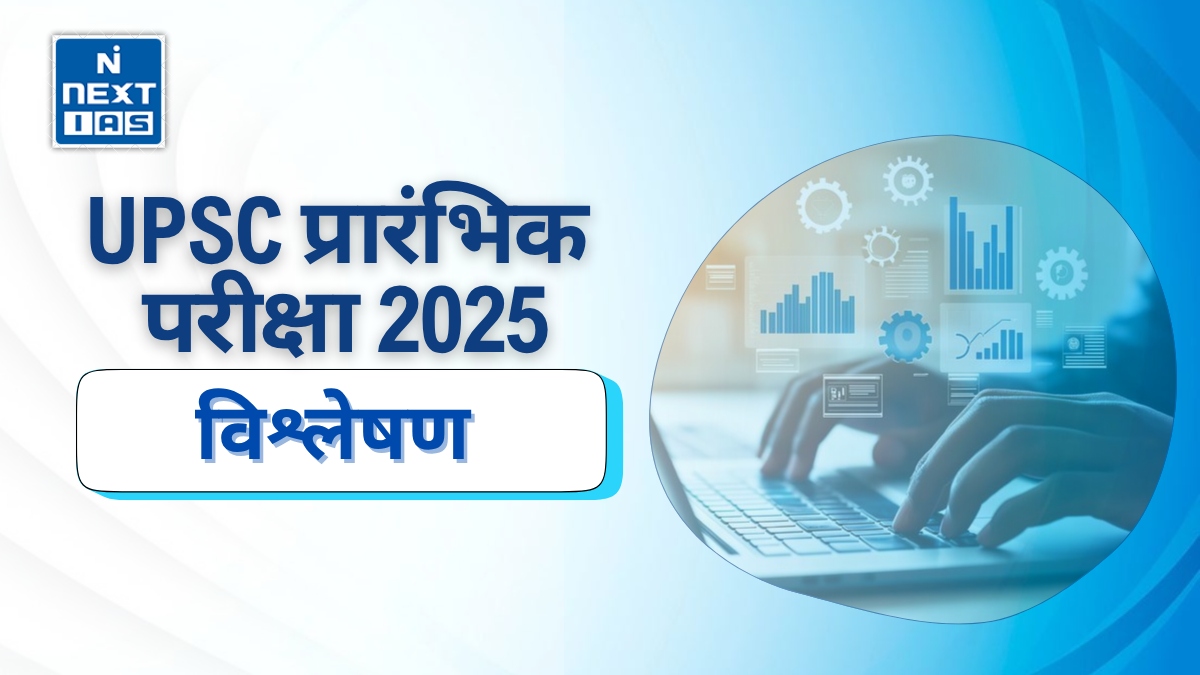
The UPSC conducted the CSE Mains 2024 History Optional Paper on September 29th, 2024, marking a significant milestone for aspirants. This examination assessed candidates’ knowledge and understanding of a diverse range of historical concepts, theories, and applications, encompassing Ancient, Medieval, Modern Indian History and World History. For future aspirants, analysing this year’s paper and identifying key trends is essential for thoroughly understanding the syllabus and adequate exam preparation.
| Exam Name | UPSC Civil Services Mains Exam 2024 |
| Total Optional Subjects in the UPSC CSE Exam | 48 subjects |
| UPSC History Optional Exam Date | September 29th, 2024 |
| UPSC History Optional Paper Duration | History Optional Paper-I (Morning Session – 9 AM to 12 PM) History Optional Paper-II (Afternoon Session – 2:30 PM to 5:30 PM) |
| Total Marks (History Optional) | 500 Marks (250 Marks Each) |
UPSC Mains 2024 History Optional Paper-I
खण्ड A
SECTION A
1. आपको दिए गए मानचित्र पर अंकित निम्नलिखित स्थानों की पहचान कीजिए एवं अपनी प्रश्न-सह-उत्तर पुस्तिका में उनमे से प्रत्येक पर लगभग 30 शब्दों की संक्षिप्त टिप्पणी लिखिए। मानचित्र पर अंकित प्रत्येक स्थान के लिए स्थान निर्धा संकेत क्रमानुसार नीचे दिए गए हैं:
Identify the following places marked on the map supplied to you and write a short note of about 30 words on each of them in your Question-cum-Answer Booklet Locational hints for each of the places marked on the map are given below seriatim: (50)
(i) प्रागैतिहासिक स्थल Prehistoric site
(ii) शैलोत्कीर्ण का क्षेत्र Area of petroglyphs
(iii) नवपाषाणकालीन स्थल
Neolithic site
(iv) हड़प्पाकालीन स्थल Harappan site
(v) बौद्ध विहार Buddhist monastery
(vi) ताम्रपाषाणकालीन स्थल Chalcolithic site
(vii) नवपाषाण और ताम्रपाषाणकालीन स्थल Neo-Chalcolithic site
(viii) महापाषाणकालीन शैलचित्रयुक्त स्थल Megalithic site with rock art
(ix) महाजनपदीय राजधानी व बुद्ध बमत्कार से सम्बद्ध
One of the Mahajanapadas’ capital and associated with Buddha’s miracle
(x) प्राचीन मानव जीवाश्म प्राप्त स्थल Hominid fossil find site
(xi) अशोक का मुख्य शिलालेख Major rock edict of Ashoka
(xii) प्राचीन व्यापारिक केन्द्र Ancient trade centre
(xiii) करमुक्त भूमि अनुदान को दर्ज करने वाला शिलालेख Stone inscription recording land grants with tax exemptions
(xiv) पारिवारिक रिश्तों के नामकरणवाला शिवमंदिर समूह Shiva temples named after family relationships
(xv) कला-सम्बद्ध अभिलेख स्थल Place of art-related inscription
(xvi) तीन भाषाओं का अभिलेख स्थल Place of inscription of three languages
(xvii) मंदिर स्थापत्य की तीनों शैलियों के उदाहरण मिलनेवाला मंदिर स्थल Temple site where three styles of temple architecture are found
(xviii) देन तीर्थस्थान Jain pilgrimage site
(xix) गुप्तकालीन शिवमंदिर Shiva temple of Gupta period
(xx) महापाषाणीय स्मारक क्षेत्र Megalithic monumental site
2. (a) हड़प्पा कला आध्यात्मिक और आनुष्ठानिक जीवन के साथ-साथ उनकी सौदर्य-सम्बन्धी संवेदनाओं को भी समझने में योगदान करती है। टिप्पणी कीजिए। Harappan art contributes to our understanding of their aesthetic sensibilities in addition to spiritual and ritualistic life. Comment. 20 Marks
(b) भारत में विभिन्न प्रकार की महापाषाणिक शवाधान प्रथाओं पर चर्चा कीजिए। इससे प्राप्त पुरातात्त्विक साक्ष्य हमें धार्मिक मान्यताओं और सांस्कृतिक प्रथाओं को जानने में कितनी मदद करते हैं?
Discuss different types of Megalithic burial practices in India. How far does the archaeological evidence from it help us to know the religious beliefs and cultural practices? 15 Marks
(c) पश्चिमी क्षत्रप अपने सामाजिक-आर्थिक योगदान के लिए जाने जाते हैं, विशेषकर व्यापार, कृषि एवं नगरीकरण में। कथन का परीक्षण कीजिए।
Western Kshatrapas are known for their socio-economic contribution, particularly in trade, agriculture and urbanization. Examine the statement. 15 Marks
3. (a) बौद्ध प्रतिष्ठानों, व्यापारियों व शिल्पकार श्रेणी के बीच सहबीवी सम्बन्धों व राजाश्रय के कारण मौर्य एवं उत्तर-मौर्य काल में धर्म, अर्थव्यवस्था एवं राजनीति में निकटता पैदा हुई। कथन का परीक्षण कीजिए।
Symbiotic relationships between Buddhist establishments traders, artisan guilds, and royal suppert led to a close proximity of religion economy and Polity in the Mauryan and post-Mauryan periods. Examine the statement. 20 Marks
(b) मौर्य साम्राज्य के सामाजिक-धार्मिक परिदृश्य को आकार देने में बौद्ध धर्म की भूमिका पर चर्चा कीजिए।
Discuss the role Buddhism in shaping the socio-religious landscape of Mauryan Empire. 15 Marks
(c) ऋग्वैदिक काल से उत्तरवैदिक काल के बीब एक संख्या जी संस्था और करप्रणाली के आकासक्रम की चर्चा कीजिए।
Discuss the evolution, of State institution taxation system from Rigvedic and period to later Vedic period. 15 Marks
4. (a) खगोल विज्ञान और गणित के क्षेत्र में आर्यभट्ट, वराहमिहिर और ब्रह्मगुप्त के योगदानों पर प्रकाश डालिए।
Highlight the contributions of Aryabhatta, Varahamihira and Brahmagupta in the fields of Astronomy and Mathematics. 20 Marks
(b) छठी और आठवीं शताब्दी ई० सं० के बीब पल्लव-चालुक्य संघर्ष-क्रम का परीक्षण कीजिए।
Examine the course of Palma-Chalukya conflicts between sixth and eighth century CE. 15 Marks
(c) आरंभिक मध्ययुगीन भारत में शिक्षा के प्रचार-प्रसार में अग्रहारों की भूमिका का परीक्षण कीजिए।
Examine the role played by the Agraharas in the promotion of education in the early medieval India. 15 Marks
खण्ड B
SECTION B
5. निम्नलिखित प्रत्येक प्रश्न का उत्तर लगभग 150 शब्दों में दीजिए: Answer the following questions in about 150 words each: 10×5=50
(a) वेसर शैली के मंदिर स्थापत्य की मुख्य विशेषताएँ बताइए।
Illustrate the main features of Vesara style temple architecture.
(b) फिरोज शाह तुगलक की आर्थिक नीतियों का मूल्यांकन कीजिए। Evaluate Firuz Shah Tughluq’s economic policies.
(c) मध्यकालीन भारतीय संस्कृति में कलंदरिया के योगदान का मूल्यांकन कीजिए।
Evaluate the contribution of Qalandariyyah to medieval Indian culture.
(d) मालवा चित्रकला शैली की मुख्य विशेषताओं की उदाहरण सहित चर्चा कीजिए। Discuss the main features of Malwa school of painting with examples.
(e) पुर्तगाली औपनिवेशिक उपक्रम की विशेषताओं पर प्रकाश डालिए। Highlight the features of Portuguese colonial enterprise.
6. (a) भारतीय वेदांत में आचार्य-त्रय (आचार्य तिकड़ी) के योगदान का विश्लेषण कीजिए।
Analyze the contributions of Acharya Triumvirate to Indian Vedanta. 20 Marks
(b) भारत में 13वीं और 14वीं शताब्दी में हिन्दू और मुस्लिम महिलाओं की स्थिति की तुलना कीजिए और अंतर बताइए।
Compare and contrast the position of Hindu and Muslim women in 13th and 14th century India. 15 Marks
(c) औरंगजेब के शासनकाल के दौरान किसान विद्रोह के कारणों एवं परिणामों का परीक्षण कीजिए।
Examine the causes and consequences of peasants uprising during the reign of Aurangzeb. 15 Marks
7. (a) “श्रेय दिलाने के बजाय, इबादतखाना ने अकबर की बदनामी बढ़ा दी।” टिप्पणी कीजिए।
“Instead of bringing credit, the Ibadat Khana brought growing discredit to Akbar.” Comment. 20 Marks
(b) मराठा गुरिल्ला युद्ध रणनीति ने बड़ी और अधिक स्थापित सेनाओं के खिलाफ उनकी सैन्य सफलताओं में कैसे योगदान दिया?
How did the Maratha guerrilla Warfare tactics contribute to their military successes against larger and mare established armies? 15 Marks
(c) हैदराबाद राज्य के राजनीतिक परिवर्तन में आसफ जाही वंश की भूमिका का परीक्षण कीजिए।
Examine the role of Asaf Jahi Dynasty in the political transformation of the State of Hyderabad. 15 Marks
8. (a) इंडो-इस्लामिक वास्तुकला के विकास में बहमनी सुल्तानों के योगदान की चर्चा कीजिए।
Discuss the contributions of Bahmani Sultans to the development of Indo-Islamic architecture. 20 Marks
(b) 18वीं सदी के भारत की राजनीतिक अर्थव्यवस्था पर पानीपत के तीसरे युद्ध के प्रभाव का मूल्यांकन कीजिए।
Evaluate the impact of the Third Battle of Panipat on the political economy of 18th century India. 15 Marks
(c) भारत में यूरोपीय व्यापारिक कंपनियों की स्थापना के फलस्वरूप हुई नगरीकरण की प्रक्रिया का परीक्षण कीजिए।
Examine the process of urbanization caused by the establishment of European trading companies in India. 15 Marks
UPSC Mains 2024 History Optional Paper-II
खण्ड A
SECTION A
1. निम्नलिखित कथनों में से प्रत्येक का लगभग 150 शब्दों में समालोचनात्मक परीक्षण कीजिए :
Critically examine the following statements in about 150 words each: 10×5=50
1. (a) प्लासी के युद्ध के बाद भाड़े के सैनिक राजा निर्माता बन गए ।
After the battle of Plassey, the mercenary became the Kingmaker. 10 Marks
1. (b) उपयोगितावाद के मूल्यों ने कम्पनी प्रशासन को भारतीय समाज में सुधार के प्रयास के लिए प्रेरित किया।
The values of utilitarianism prompted the Company administration to attempt reform of Indian society. 10 Marks
1. (c) 19वीं सदी के दौरान, सामाजिक सुधार की कार्यसूची (एजेंडे) को धीरे-धीरे पुनरुत्थानवाद द्वारा प्रतिस्थापित किया गया ।
In course of the 19th century, the agenda of social reform was gradually replaced by revivalism. 10 Marks
1. (d) भारत सरकार अधिनियम 1935 के संघीय प्रावधान राजाओं के कठोर रूख से असफल हो गए।
The federal provisions of the Government of India Act of 1935 foundered on the rock of princely intransigence. 10 Marks
1. (e) पाकिस्तान योजना की ताकत उसका अस्पष्ट होना था। यह सब लोगों के लिए सब कुछ था ।
The strength of the Pakistan programme was its vagueness. It meant everything to everyone. 10 Marks
2. (a) भारत में ब्रिटिश राजस्व नीतियों के फलस्वरूप कृषि वाणिज्यीकरण की गति में वृद्धि हुई। आलोचनात्मक विश्लेषण कीजिए ।
The pace of commercialisation of agriculture increased as a result of British revenue policies in India. Critically examine. 20 Marks
2. (b) 1857 का महान् विद्रोह क्यों उत्तर भारत में ही सीमित रहा? उपमहाद्वीप में ब्रिटिश शासन की प्रकृति में यह कैसे परिवर्तन लाया ? व्याख्या कीजिए ।
Why was the Great Revolt of 1857 confined only to North India? How did it change the character of British rule in the subcontinent? Explain 10+10=20 Marks
2. (c) 1947 के बाद भूमि सुधार की माँग राष्ट्रीय राजनीति में कभी एजेंडा क्यों नहीं बनी ? स्पष्ट कीजिए ।
Why did the demand for land reform never become an agenda in national politics after 1947? Elucidate.10 Marks
3. (a) औपनिवेशिक भारत में राजनीतिक उम्रवाद अक्सर सांस्कृतिक राष्ट्रवाद में अभिमुख हो जाते थे, परन्तु हमेशा नहीं। टिप्पणी कीजिए।
Political extremism in colonial India often converged with cultural nationalism, but not always. Comment. 20 Marks
3. (b) 1947 के बाद भारत में क्षेत्रवाद जितना ही विकासात्मक अनिवार्यताओं से प्रेरित था उतना ही भाषाई विशिष्टतावाद से भी। स्पष्ट कीजिए ।
Regionalism in India after 194m was occasioned by developmental imperatives as much as linguistic particularism. – Elucidate.20 Marks
3. (c) सलबाई की सन्धि के फलस्वरूप बीस वर्षों की शान्ति मराठाओं के लिए रणनीति के परिप्रेक्ष से बहुत महँगी साबित हुई। स्पष्ट कीजिए ।
Twenty years of peace secured by the treaty of Salbai proved very costly to the Marathas in strategic terms. – Elucidate 10 Marks
4. (a) 1905 के स्वदेशी आन्दोलन ने कई कार्यनीतियों का पूर्वानुमान कर लिया था जिन्हें बाद में गाँधीवादी जन आन्दोलन के दौरान विकसित किया गया । आलोचनात्मक विश्लेषण कीजिए।
The Swadeshi movement of 1905 anticipated many of the tactics that were later developed during the Gandhian mass movement. – Critically examine. 20 Marks
4. (b) औपनिवेशिक शासन के विरुद्ध अपने संघर्ष में एक दूसरे को मजबूत करने के लिये, ट्रेड यूनियन आंदोलन राष्ट्रवादी राजनीति की मुख्यधारा से जुड़ गया था। टिप्पणी कीजिए।
The trade union movement joined forces with the mainstream of nationalist politics to strengthen each other in their struggle against colonial rule. – Comment. 20 Marks
4. (c) स्वतंत्रता के बाद भारत की विकासात्मक रणनीति आर्थिक अनिवार्यता से प्रभावित थी, न कि वैचारिक विचार से। टिप्पणी कीजिए।
India’s developmental strategy after independence was influenced by economic imperatives, not ideological considerations. – Comment. 10 Marks
खण्ड B
SECTION B
5. निम्नलिखित कथनों में से प्रत्येक का लगभग 150 शब्दों में समालोचनात्मक परीक्षण कीजिए: Critically examine the following statements in about 150 words each: 10×5=50
5. (a) प्रबोधन विचारकों द्वारा उठाये गये विचार पुरातन राज के समाज तथा राजनीतिक व्यवस्था के लिए बेहद अस्थिर करने वाले और चुनौतीपूर्ण थे।
The ideas raised by Enlightenment thinkers were profoundly unsettling and challenging to old regime society and political order. 10 Marks
5. (b) अमरीकी गृह युद्ध औद्योगिक उत्तर तथा कृषीय दक्षिण की आवश्यकताओं की असमानता का परिणाम था ।
The American Civil War was a result of disparity of needs of industrial north and agrarian south. 10 Marks
5. (c) जर्मनी का एकीकरण जितना कोयले और लोहे का उत्पाद था उतना ही रक्त और लौह का भी ।
The unification of Germany was as much a product of coal and iron as it was of blood and iron. 10 Marks
5. (e) 1989 की क्रान्तियों ने केवल सरकारों को ही नष्ट नहीं कियाः उन्होंने एक विचारधारा का भी अन्त किया ।
The revolutions of (1989) did not simply destroy governments; they also ended an ideology. 10 Marks
6. (a) इंग्लैण्ड के औद्योगीकरण का गतिक्रम, क्रान्ति करने के लिए, कुछ ज्यादा ही लम्बी अवधि के लिए था। टिप्पणी कीजिए ।
The course of the English industrialization was too long drawn to be considered a revolution. Comment 20 Marks
6. (b) प्रथम विश्व युद्ध के बाद यूरोप का सामाजिक तथा राजनीतिक परिदृश्य फाँसीबाद के उदय के लिए विशिष्ट रूप से अनुकूल था। विवेचना कीजिए ।
The social and political landscape of Europe after the first world war was uniquely suited to the rise of Fascism Discuss. 20 Marks
6. (c) रूस के औद्योगीकरण में राज्य सबसे महत्त्वपूर्ण कारक था। टिप्पणी कीजिए ।
The state was the most important factor in the industrialization of Russia. Comment. 10 Marks
7. (a) द्वितीय विश्व युद्ध वास्तविक वैश्विक संघर्ष था। विवेचना कीजिए ।
The second world war was a truly global conflict. Discuss 20 Marks
7. (b) यूरोपीय आर्थिक एकीकरण के विभिन्न चरणों को रेखांकित कीजिए ।
Trace the different stages of European economic integration 20 Marks
7. (c) नस्ल-भेद शासन की प्रकृति ने दक्षिण अफ्रीका के लोकतांत्रिक राज्य होने के दावे को कमजोर कर दिया ।
The nature of apartheid regime undermined South Africa’s claim of being a democratic polity. 10 Marks
8. (a) दो पावर ब्लाक का उद्भव न केवल प्रतिद्वन्द्वी विचारधाराओं का प्रतीक था, परन्तु दो वैकल्पिक आर्थिक विकास का प्रारूप भी था। व्याख्या कीजिए ।
The emergence of two power blocs not only symbolised two competing ideologies but also two alternative models of economic growth. Explain 20 Marks
8. (b) लैटिन अमेरिका का अल्प विकास किस हद तक नवसाम्राज्यवाद के कारण हुआ ?
To what extent underdevelopment in Latin America is caused by neo-imperialism? 20 Marks
8. (c) हो ची मिन्ह वियतनामी स्वतंत्रता आन्दोलन के केन्द्रीय व्यक्ति के रूप में कैसे उभरे ?
How did Ho Chi Minh emerge as the central figure in the Vietnamese independence movement? 10 Marks
UPSC Mains 2024 History Optional Papers PDF
The UPSC Civil Services Mains 2024 History Optional Paper has been conducted, and the Question Paper PDF is now available. This question paper offers a detailed collection of questions, serving as an essential resource for understanding the specific requirements of the History Optional Subject. Aspirants can review the History question paper to evaluate the topics and difficulty level of the questions, providing valuable insights into the expectations of the exam. The link to download the PDF of the UPSC Mains 2024 History Optional question paper is provided below for easy access.
How to Download the UPSC Civil Services Mains 2024 History Optional Papers?
To download the UPSC Civil Services Mains 2024 History Optional Papers, follow these steps:
- Visit the Official UPSC Website: Go to the official website of the Union Public Service Commission at upsc.gov.in.
- Navigate to the Examination Section: Look for the ‘Examinations’ tab in the main menu and click on it.
- Select ‘Previous Year Papers’: Within the Examinations section, find the link for ‘Previous Year Papers’ papers.
- Locate the 2024 Mains Examination Papers: Look for the section dedicated to the 2024 Civil Services Mains Examination.
- Find the History Optional Paper: Scroll through the list of available papers to locate the History Optional Paper.
- Download the PDF: Click on the link for the History Optional Paper to open it. Then, you can download the PDF file by clicking the download icon or using the ‘Save As’ option from your browser.
- Save for Reference: Once downloaded, save the document in a folder for easy access and future reference.
UPSC Mains Optional Previous Year Question Papers
| Geography Optional Papers | Download Now |
| PSIR Optional Papers | Download Now |
| Sociology Optional Papers | Download Now |
| Anthropology Optional Papers | Download Now |
| History Optional Papers | Download Now |
| Economics Optional Papers | Download Now |
| Mathematics Optional Papers | Download Now |
| Civil Engineering Optional Papers | Download Now |
| Electrical Engineering Optional Papers | Download Now |
| Mechanical Engineering Optional Papers | Download Now |
The UPSC Mains 2024 History Optional Paper has provided aspirants with a crucial resource to understand the exam’s requirements and develop effective strategies for future preparations. Stay tuned for more updates and insights on the UPSC Mains Optional examination, and download the History Optional question paper using the link provided.






